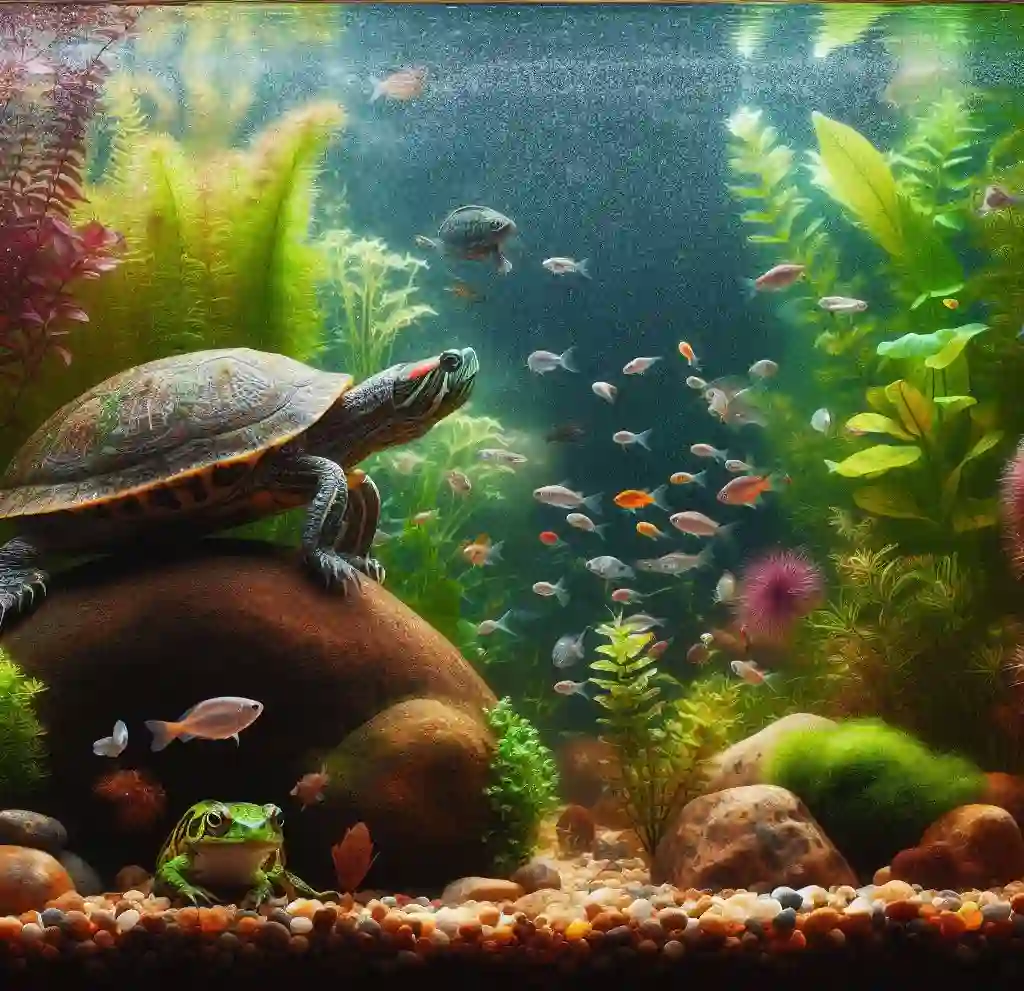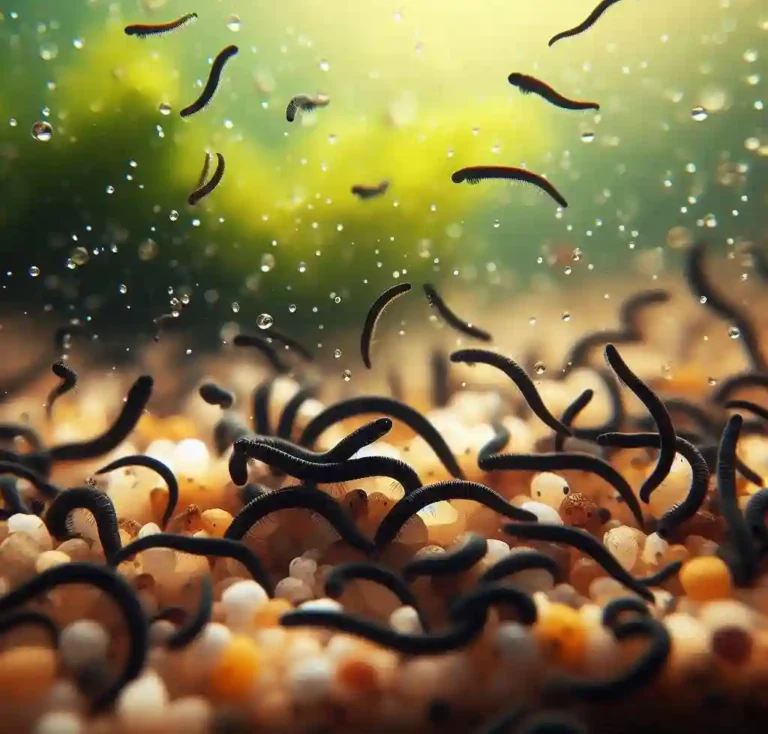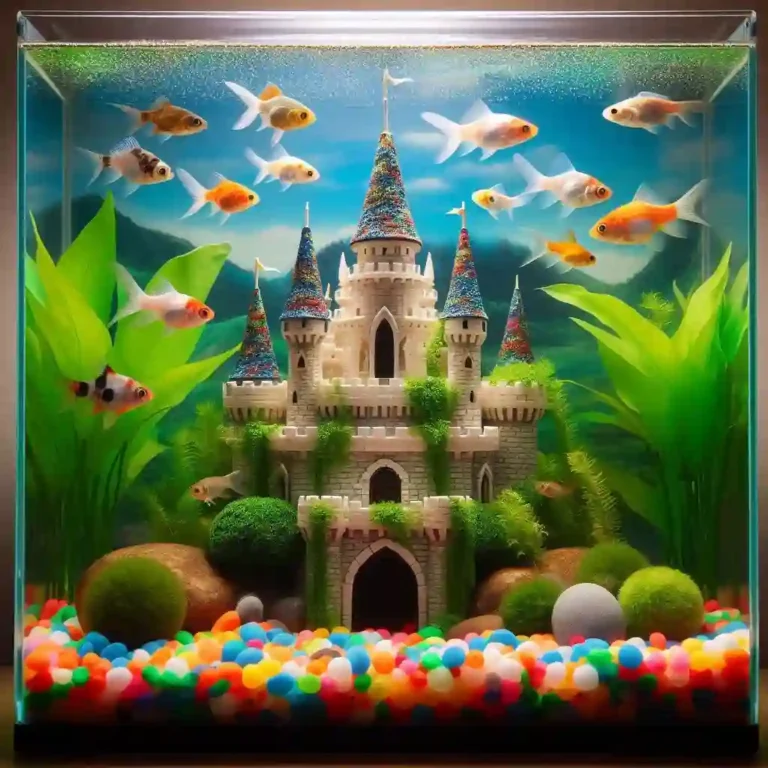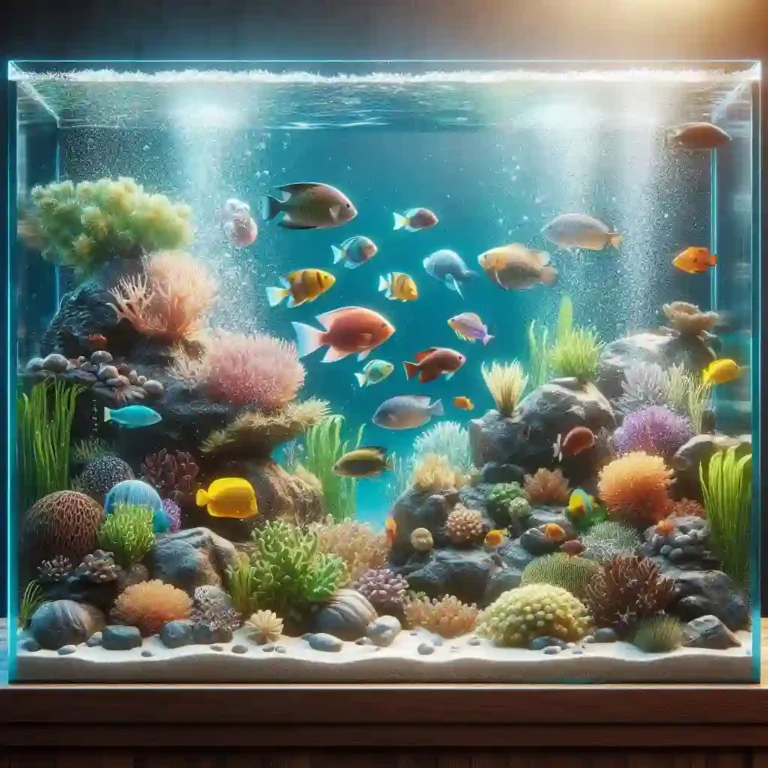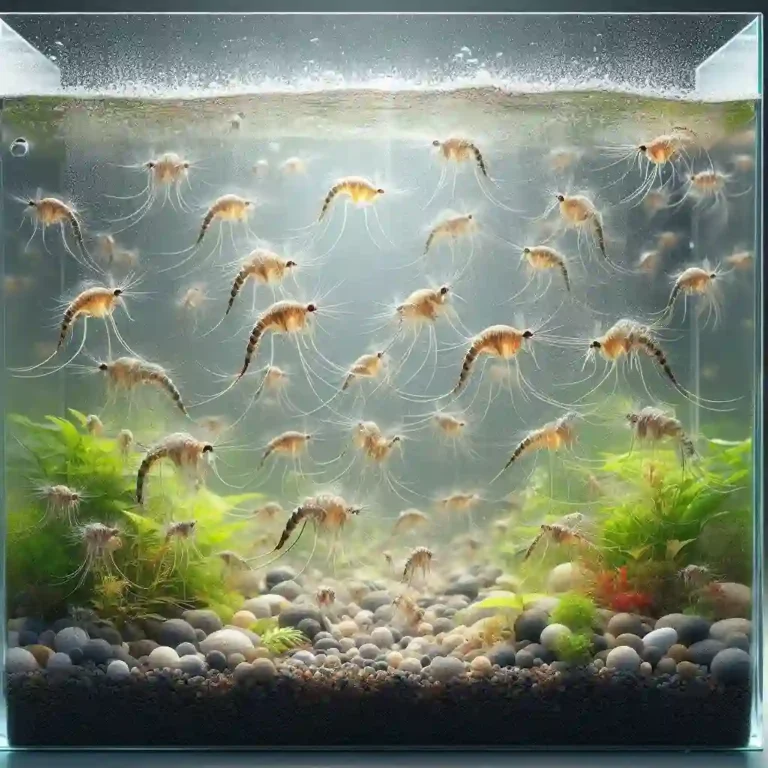Can Turtles and Frogs Live Together in Perfect Harmony?
Can Turtles and Frogs Live Together in Perfect Harmony? When it comes to creating a thriving aquarium or terrarium, many enthusiasts wonder if it’s possible to bring together two of the most fascinating creatures in the animal kingdom: turtles and frogs.
Both have unique needs, habits, and personalities, which can make cohabitation a challenging task.
In this article, we’ll delve into the world of turtles and frogs, exploring their individual needs, potential conflicts, and the essential tips and considerations for successfully housing them together.
Can Turtles and Frogs Live Together – A Quick Guide

Yes, turtles and frogs can live together in the same habitat, but it requires careful planning and attention to their specific needs. Here are some tips to consider:
- Choose compatible species: Select turtle and frog species that are compatible and have similar environmental requirements.
- Provide a suitable habitat: Create a habitat that meets the needs of both turtles and frogs, including a suitable temperature range, humidity, and lighting.
- Monitor water quality: Regularly test the water quality and make adjustments as necessary to ensure a healthy environment for both species.
- Feed them separately: Feed turtles and frogs separately to prevent competition for food and ensure they receive a balanced diet.
- Monitor animal health: Regularly inspect turtles and frogs for signs of illness or stress and seek veterinary care if necessary.
- Maintain a clean habitat: Regularly clean the habitat and decorations to prevent the buildup of toxins and maintain a healthy environment.
Understanding the Needs of Turtles and Frogs
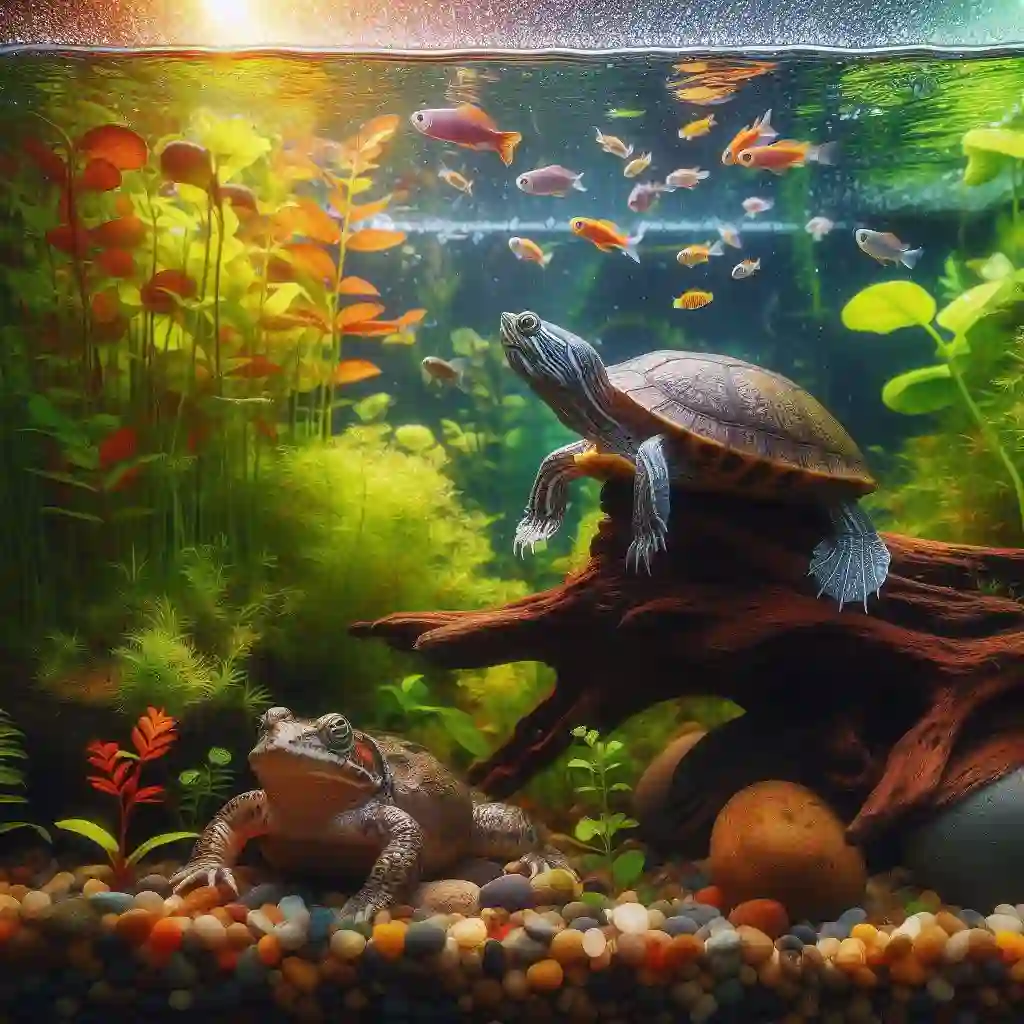
Turtle Needs:
- Space: Turtles need a spacious environment with adequate swimming room and basking areas.
- Temperature: Turtles require a temperature range of 75-85°F (24-29°C) with a basking spot of 85-90°F (29-32°C).
- Humidity: Turtles thrive in a humid environment with a relative humidity of 50-60%.
- Lighting: Turtles need UVB lighting to promote calcium metabolism and prevent metabolic bone disease.
- Diet: Turtles are omnivores and require a balanced diet that includes vegetables, fruits, and protein sources.
- Hiding places: Turtles need hiding places, such as rocks, plants, and logs, to feel secure and reduce stress.
Frog Needs:
- Moisture: Frogs require a humid environment with a relative humidity of 50-80%.
- Temperature: Frogs need a temperature range of 65-75°F (18-24°C) with a slight drop in temperature at night.
- Lighting: Frogs require low-wattage lighting, and some species may require UVB lighting.
- Diet: Frogs are carnivores and require a diet rich in live insects, such as crickets, mealworms, and flies.
- Hiding places: Frogs need hiding places, such as plants, rocks, and logs, to feel secure and reduce stress.
- Water: Frogs require access to clean, dechlorinated water for soaking and hydration.
The Benefits of Coexistence: Why House Turtles and Frogs Together?
1. Diverse and Interesting Environment
Housing turtles and frogs together creates a diverse and interesting environment that mimics their natural habitats. This diversity can lead to a more engaging and stimulating environment for both species.
2. Reduced Aggression
When turtles and frogs are housed together from an early age, they tend to develop a more peaceful coexistence. This reduced aggression leads to a more harmonious environment and reduces stress.
3. Mutual Benefit
Turtles and frogs can benefit from each other’s presence. For example, turtles can help to clean up leftover food, while frogs can help to control insect populations.
4. Increased Activity
When housed together, turtles and frogs tend to be more active and engaged. This increased activity can lead to a more stimulating environment and a reduced risk of boredom and stress.
5. Educational Opportunities
Housing turtles and frogs together provides a unique opportunity for education and learning. By observing their behavior, habitat, and interactions, you can gain a deeper understanding of these fascinating creatures.
6. Aesthetically Pleasing
A well-designed habitat featuring turtles and frogs can be a visually stunning and aesthetically pleasing environment. The combination of aquatic and terrestrial elements creates a unique and captivating display.
7. Space Efficiency
Housing turtles and frogs together can be a space-efficient option for those with limited space. By creating a multi-species habitat, you can make the most of your available space.
Potential Conflicts: Aggression, Competition, and Stress
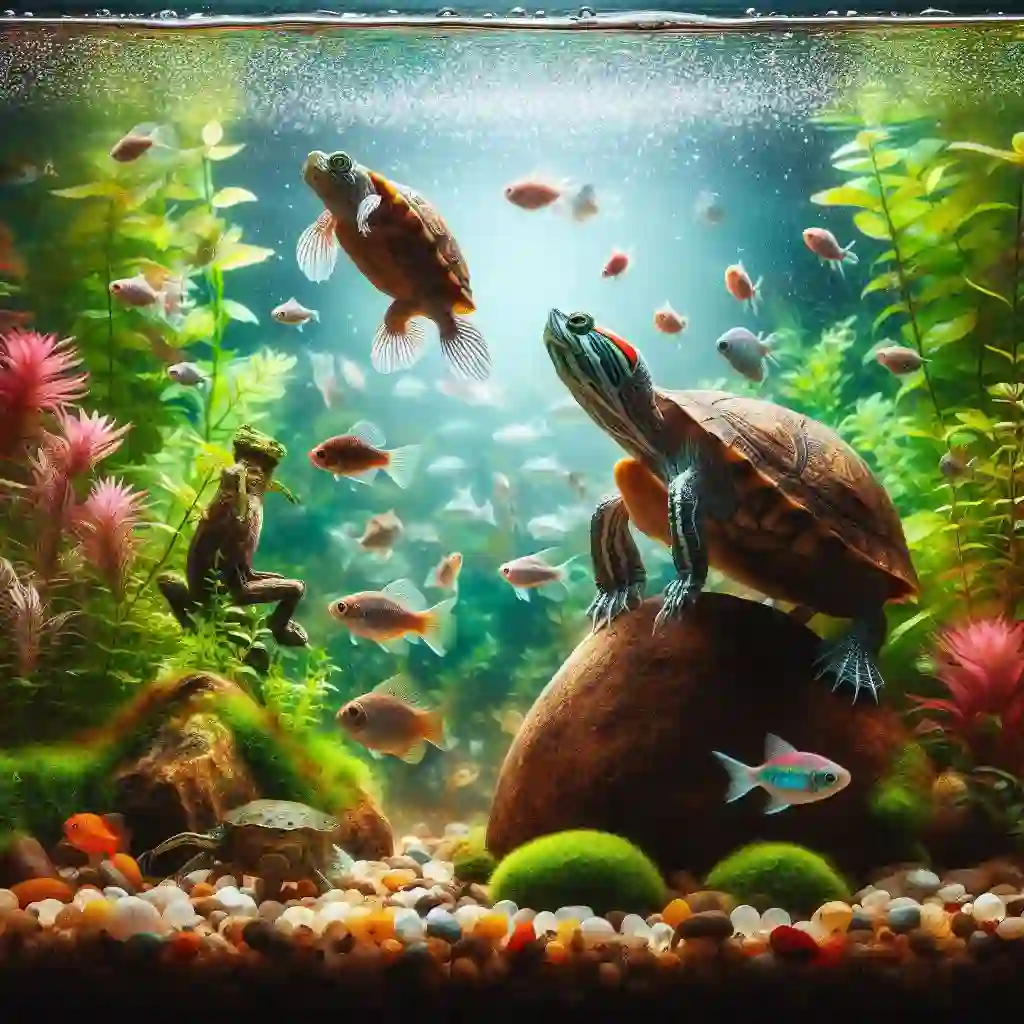
Aggression
Aggression is a common issue when housing turtles and frogs together. Turtles, especially males, can be territorial and may defend their territory from frogs. Frogs, on the other hand, may see turtles as a threat and defend themselves. Aggression can manifest in various ways, including:
- Biting or nipping
- Chasing or pursuing
- Territorial marking
- Resource competition
Competition for Resources
Turtles and frogs have different dietary needs, but they may still compete for resources such as food, water, and basking areas. This competition can lead to stress and aggression, especially if one species is dominant over the other.
Stress
Stress is a significant concern when housing turtles and frogs together. Both species can be sensitive to changes in their environment, and the presence of another species can cause stress. Stress can lead to a range of health problems, including:
- Immune system suppression
- Digestive issues
- Skin problems
- Behavioral changes
Mitigating Conflicts
To mitigate conflicts and create a harmonious environment, it’s essential to:
- Provide a large enough habitat to accommodate both species comfortably
- Ensure adequate hiding places and visual barriers to reduce stress and aggression
- Offer a varied and nutritious diet that meets the needs of both species
- Monitor behavior and intervene early to prevent conflicts from escalating
- Maintain good water quality and a clean environment to reduce stress and disease
Choosing Compatible Species: Selecting the Right Turtles and Frogs
Turtle Species
When selecting turtles for cohabitation with frogs, consider the following species:
- Red-eared sliders (Trachemys scripta elegans): A popular pet turtle, red-eared sliders are relatively small and calm, making them a good choice for cohabitation with frogs.
- Painted turtles (Chrysemys picta): Painted turtles are gentle and non-aggressive, making them a good match for frogs.
- Map turtles (Graptemys spp.): Map turtles are generally calm and can thrive in a community setting with frogs.
Frog Species
When selecting frogs for cohabitation with turtles, consider the following species:
- African dwarf frogs (Hymenopus digitatus): These small, gentle frogs are well-suited for cohabitation with turtles.
- American green tree frogs (Hyla cinerea): These frogs are calm and non-aggressive, making them a good match for turtles.
- Red-eyed tree frogs (Agalychnis callidryas): These frogs are relatively small and can thrive in a community setting with turtles.
Compatibility Factors
When selecting species for cohabitation, consider the following factors:
- Size: Ensure that the turtles and frogs are similar in size to prevent bullying or predation.
- Temperament: Choose species with calm and gentle temperaments to reduce aggression and stress.
- Habitat requirements: Ensure that the species have similar habitat requirements, such as temperature, humidity, and lighting.
- Diet: Choose species with similar dietary needs to simplify feeding and reduce competition for resources.
Designing a Harmonious Habitat: Tank Size, Layout, and Decorations
Tank Size
The tank size will depend on the species of turtles and frogs you are keeping. A general rule of thumb is to provide at least 10 gallons of water per inch of turtle and 5 gallons of water per frog. For example, a 20-gallon tank would be suitable for a small turtle and a few frogs.
Layout
The layout of the tank should provide separate areas for swimming, basking, and hiding. A good layout should include:
- A swimming area for the turtles
- A basking area with a heat source and UVB lighting
- A hiding area with plants, rocks, and other decorations
- A terrestrial area for the frogs with a water bowl and hiding places
Decorations
Decorations can help create a natural environment and provide hiding places for both turtles and frogs. Some ideas for decorations include:
- Live plants such as water wisteria, anacharis, and java moss
- Rocks, logs, and other natural decorations
- Artificial plants and decorations such as treasure chests and sunken ships
- Hiding places such as PVC pipes and ceramic caves
Water Quality
Maintaining good water quality is crucial for the health and well-being of both turtles and frogs. Regular water changes, a good filtration system, and monitoring water parameters can help maintain a healthy environment.
Temperature and Lighting
The temperature and lighting requirements for turtles and frogs are different. Turtles require a basking spot with a temperature of around 85-90°F (29-32°C), while frogs require a cooler temperature of around 75-80°F (24-27°C). A temperature gradient can be created by using a heat source and a cooler area. UVB lighting is also essential for both species.
Diet and Nutrition: Meeting the Needs of Both Turtles and Frogs
Turtle Diet
Turtles are omnivores and require a diet that includes a variety of foods such as:
- Leafy greens like kale, collard greens, and mustard greens
- Fruits like berries, melons, and apples
- Protein sources like crickets, mealworms, and shrimp
- Commercial turtle pellets or sticks
Frog Diet
Frogs are carnivores and require a diet that includes a variety of live insects such as:
- Crickets
- Mealworms
- Waxworms
- Flies
- Earthworms
Feeding Strategies
To ensure that both turtles and frogs receive a balanced diet, consider the following feeding strategies:
- Offer a variety of foods to ensure that both species receive a balanced diet
- Feed turtles and frogs separately to prevent competition for food
- Provide a calcium supplement to promote strong bone growth in both species
- Avoid overfeeding, as this can lead to health problems and water quality issues
Nutritional Considerations
When feeding turtles and frogs together, consider the following nutritional considerations:
- Turtles require a higher calcium intake than frogs, so ensure that they receive adequate calcium supplements
- Frogs have a higher protein requirement than turtles, so ensure that they receive a diet rich in protein
- Both species require a source of vitamin D3, which can be provided through UVB lighting or supplements
Health and Hygiene: Preventing Disease and Maintaining a Clean Environment
Preventing Disease
To prevent disease in a turtle and frog habitat, consider the following:
- Quarantine new animals before introducing them to the habitat
- Provide a clean and well-maintained environment
- Monitor water quality and perform regular water changes
- Provide a balanced diet and avoid overfeeding
- Monitor for signs of illness and seek veterinary care if necessary
Maintaining a Clean Environment
To maintain a clean environment, consider the following:
- Perform regular water changes (at least 25% every week)
- Clean the habitat and decorations regularly
- Monitor water quality and adjust as necessary
- Provide a proper filtration system
- Avoid overcrowding the habitat
Hygiene Practices
To maintain good hygiene practices, consider the following:
- Wash your hands before and after handling the animals or habitat
- Use a cleaning solution to clean the habitat and decorations
- Avoid touching your face or eyes after handling the animals or habitat
- Clean and disinfect any equipment or utensils used in the habitat
Monitoring Health
To monitor the health of your turtles and frogs, consider the following:
- Monitor for signs of illness such as lethargy, loss of appetite, or changes in behavior
- Perform regular health checks on your animals
- Monitor water quality and adjust as necessary
- Seek veterinary care if you suspect illness or disease
Monitoring and Maintenance: Ensuring a Thriving Ecosystem
Monitoring Water Quality
Regularly test the water for:
- Ammonia
- Nitrite
- Nitrate
- pH
- Temperature
Make adjustments as necessary to maintain optimal water quality.
Monitoring Animal Health
Regularly inspect your turtles and frogs for signs of illness or stress, such as:
- Lethargy
- Loss of appetite
- Changes in behavior
- Skin or shell lesions
- Respiratory distress
Seek veterinary care if you suspect illness or disease.
Maintaining the Habitat
Regularly clean and maintain the habitat, including:
- Cleaning the tank and decorations
- Replacing filter media
- Monitoring and adjusting water flow
- Trimming plants and maintaining aquatic vegetation
Performing Regular Water Changes
Regular water changes help maintain optimal water quality and prevent the buildup of toxins. Aim to change:
- 25% of the water weekly
- 50% of the water bi-weekly
- 100% of the water monthly
Scheduling Regular Maintenance
Create a schedule to ensure regular maintenance and monitoring, including:
- Daily water quality checks
- Weekly water changes and habitat cleaning
- Bi-weekly filter cleaning and maintenance
- Monthly habitat deep cleaning and decoration maintenance
FAQs
Q: Can turtles and frogs live together?
A: Yes, turtles and frogs can live together in the same habitat, but it requires careful planning and attention to their specific needs.
Q: What are the benefits of housing turtles and frogs together?
A: Housing turtles and frogs together can create a diverse and interesting environment, and can also help to reduce stress and boredom in both species.
Q: What are the challenges of housing turtles and frogs together?
A: The main challenges of housing turtles and frogs together are ensuring that their different environmental requirements are met, and that they do not compete for food or resources.
Q: How do I choose the right turtles and frogs to live together?
A: When choosing turtles and frogs to live together, look for species that have similar environmental requirements and are compatible with each other.
Q: How do I create a suitable habitat for turtles and frogs?
A: To create a suitable habitat for turtles and frogs, provide a tank with a suitable temperature range, humidity, and lighting, and include plants and decorations to provide hiding places and visual barriers.
Q: How do I feed turtles and frogs together?
A: Feed turtles and frogs separately to prevent competition for food and ensure they receive a balanced diet.
Q: How do I monitor the health of turtles and frogs living together?
A: Regularly inspect turtles and frogs for signs of illness or stress, and seek veterinary care if necessary.
Q: Can turtles and frogs live together in a small tank?
A: While it is possible to house turtles and frogs in a small tank, it is generally recommended to provide a larger tank to ensure that both species have enough space to move around and thrive.
Q: Can turtles and frogs live together in a community tank?
A: Yes, turtles and frogs can live together in a community tank with other aquatic animals, such as fish and snails, as long as the tank is large enough and the animals are compatible.
Q: How do I prevent disease in a tank with turtles and frogs?
A: To prevent disease in a tank with turtles and frogs, maintain good water quality, provide a balanced diet, and monitor the health of the animals regularly.
Q: Can turtles and frogs live together in a outdoor pond?
A: Yes, turtles and frogs can live together in an outdoor pond as long as the pond is large enough and the animals are compatible.
Q: How do I create a suitable pond for turtles and frogs?
A: To create a suitable pond for turtles and frogs, provide a pond with a suitable temperature range, humidity, and lighting, and include plants and decorations to provide hiding places and visual barriers.
Q: Can turtles and frogs live together in a indoor aquarium?
A: Yes, turtles and frogs can live together in an indoor aquarium as long as the aquarium is large enough and the animals are compatible.
Q: How do I create a suitable aquarium for turtles and frogs?
A: To create a suitable aquarium for turtles and frogs, provide an aquarium with a suitable temperature range, humidity, and lighting, and include plants and decorations to provide hiding places and visual barriers.

Hello, I’m Aria Cooper, the heart and soul behind Swimmy Buddies. As a devoted fish aficionado, I share my aquatic adventures and expertise to inspire your own underwater explorations. 🐠🌊

